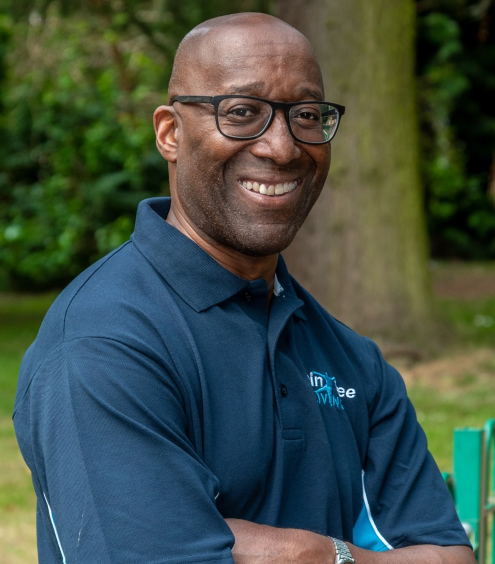What To Expect
Your First visit
Your first visit will involve a detailed medical assessment where I will ask questions about your problem, your general health, other medical care you are receiving or medication you are taking, and record this in your case notes.
You will also be asked about your work, diet, hobbies, and any sporting activities as this will provide valuable information for your diagnosis.
Any information you provide will be confidential and can only be shared with another health professional with your permission.

Here are some frequently asked questions about your visit:
You are always welcome to bring a friend or relative to your appointment if you wish and a chaperone is always required where a client is under 18 years of age.
Yes, I do. You can read more about this in my blog post that covers the topic in much more details
Osteopathic diagnosis and treatment involves both observation and palpation (touch), therefore you are likely to be asked to undress to your underwear, but it is not compulsory. If you are uncomfortable with undressing just let us know and we will be happy to examine and treat you while you are wearing shorts and a t-shirt. Your privacy will be respected at all times and if it is important that you are seen by a practitioner of the same gender, please let us know when you are booking your appointment.
You do not need to tell your doctor that you are seeing an osteopath. As primary healthcare practitioners we are clinically trained to assess patients without the need to look at their medical records.
We sometimes need to contact your GP about aspects of your health and medical history but would always obtain your consent before contacting any medical carers.
At the end of your treatment and assuming you have no objections, we send your GP a summary of any problems identified and your osteopathic treatment to ensure your medical records are kept up to date.
The primary aim of your initial consultation is to identify any problems and to decide whether osteopathy is a safe and appropriate treatment for you. Providing there are no contraindications (issues where osteopathy could cause a problem) we would always expect to treat you on your first visit.
Osteopathic treatment is usually very gentle, but manipulating, massaging or stretching an injured area may be uncomfortable. We will explain what you are likely to feel and will always stop if the treatment is causing you too much pain.
Most people initially feel easier after treatment although it is not unusual to experience a treatment reaction and become more uncomfortable as the day goes on. Where there is a reaction the discomfort can last 24-48 hours and this can be managed using over the counter pain relief such as ibuprofen or paracetamol.
We will advise you on the best option and if you have any concerns about how things feel after a treatment, please get in touch.
The number of treatments varies greatly, but the majority patients require 3-5 treatment sessions. Having said that everyone responds differently to osteopathy and we will tell you if you have a problem that is likely to be completely resolved or is something that would benefit from a treatment at regular intervals to help to maintain function and manage your symptoms.
Many patients are reluctant to take painkillers however, the sensible use of medication can be extremely useful, especially in the early phases of some conditions allowing you to keep mobile and function where pain would otherwise make it more difficult.
Your osteopath will provide advice on the suitability of over the counter pain medication as well as other options that could help to ease discomfort including the use of heat and/or cold packs, pain relieving gels or gentle exercises.
All treatments carry some level of risk, but the vast majority of patients find osteopathic treatment helpful. There may be some adverse reactions following your initial treatment including:
- an increase in joint pain/ stiffness
- mild headache
- increased tiredness
Severe adverse reactions happen very rarely as we are trained to medically screen patients to assess their suitability for osteopathic treatment. Your osteopath will adapt their techniques appropriately or they may even decide that treatment is not suitable and will discuss other treatment options, referring you to another medical professional as appropriate.
We do not offer home visits as the quality of care would be compromised and the fee we would need to charge to make it viable would not represent good value for money. If you are in so much pain you are unable to get to the clinic, there is generally little effective treatment we can offer. We are always willing to provide help over the telephone so please call and we can advise on what to do next. A treatment when the really painful symptoms have reduced and you are mobile enough to visit the clinic is much more effective.
Treatment Approach
Following your examination we will discuss my findings and agree a treatment plan to ensure you fully understand what I have found and are happy with the plan. It is also your opportunity to ask questions.
I will always look at all areas that might be involved in your problem e.g. shoulder pain could also involve the neck, upper back, collarbone and ribs. Ignoring these areas and just treating the symptoms means that the pain often returns while treating all areas involved will resolve the problem..
The key aim of your treatment will be to improve the function of all affected nerves, muscles, ligaments, and joints. Treating these areas will help to reduce pain, improve movement and restore normal function.
On-going Care
Experience has shown that clients want to be actively involved in resolving their problems and this approach leads to better results. This is why your treatment will include advice on things that you can do to help yourself and prevent problems returning.
This may involve simple exercises, suggestions to help improve your posture, advice on your workstation setup or dietary advice.
It is sometimes necessary to refer you to back to your GP for additional tests such as an MRI scan or for more appropriate treatment. You may also be referred to another healthcare practitioner such as a physiotherapist or nutritionist to supplement your osteopathic treatment. Pain Free Living has established professional links with a range of therapists so you can be sure that they meet our very high standards of healthcare. I have found that this multi-disciplinary approach leads to much better treatment results and happier clients.

